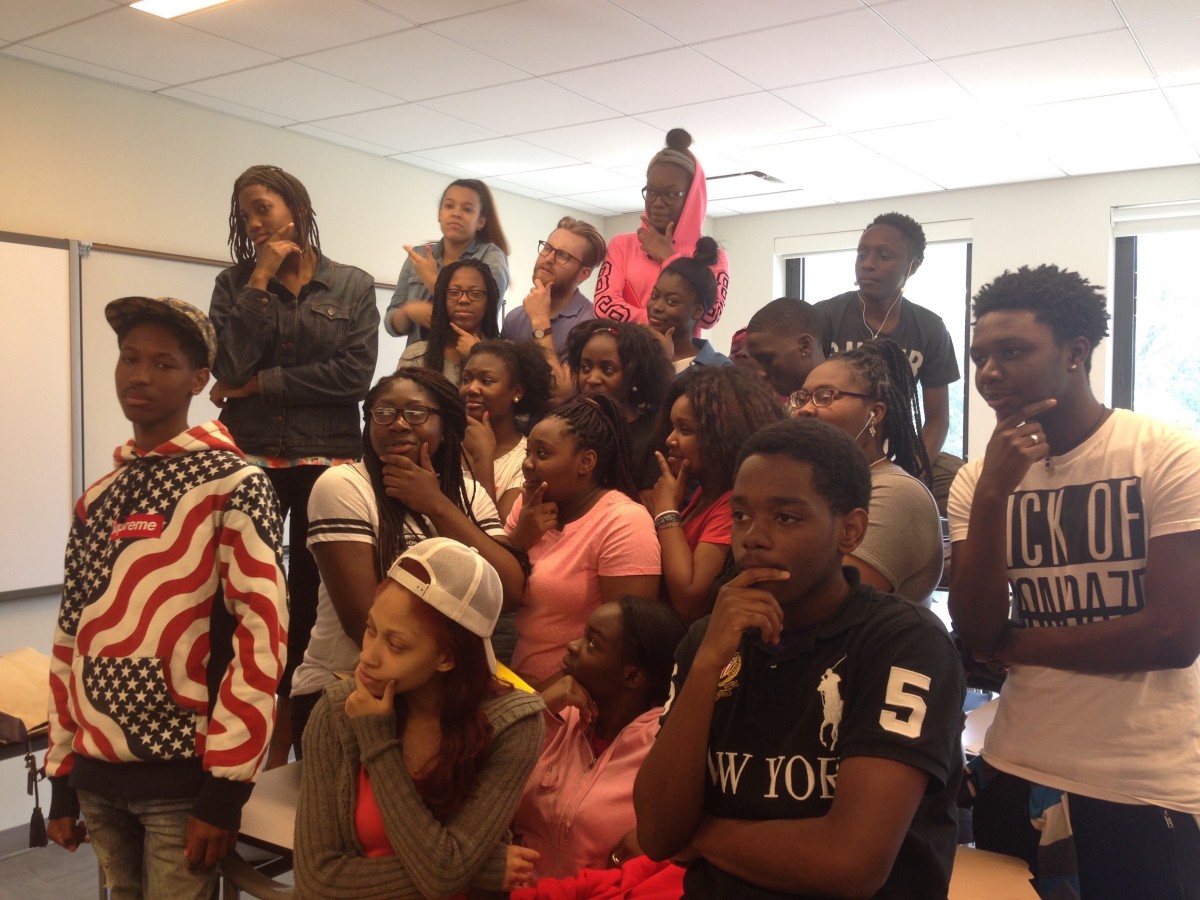Curriculum or Pedagogy? For Teachers, You Must Support Both
December 11, 2018

Austin Reid in class.
A good curriculum is hard to find. Teachers know this all too well, so it is welcoming to see the recent push towards implementing high-quality curriculum as a reform strategy. Much has been made about this and rightfully so: Implementing high-quality curriculum should be a priority.
But too often, I hear about districts and schools placing such an immediate and singular focus on implementing curriculum that they neglect efforts to improve instructional practice. As a former teacher, I learned firsthand that curriculum versus pedagogy is a false choice. Teachers need support with both in order for their students to learn in meaningful and significant ways.
When I started teaching high school Spanish, I was provided with an 11 x 17 printout of learning targets that served as the district's curriculum and a set of textbooks that I had learned from in middle school 10 years prior. The learning targets offered no alignment with the content of the textbooks. To make matters worse, the content of the all-too-familiar and outdated textbook—which failed to inspire me as a student—felt like an impossible sell to my six classes.
As a result, I spent most of my first year cobbling together basic lessons following the "I Do, We Do, You Do" format and developing enough instructional and behavioral management strategies to condition my students to expectations and routines that kept them productive during class. Time on task, assignments completed, and demonstrated proficiency on assignments were my measures of success.
I knew in the back of my mind that I was creating a classroom of cheery compliance rather than a truly ambitious and engaging environment for learning. I just didn’t have the curriculum, instructional materials or resources to help my students learn in significant and meaningful ways.
The lesson I learned was simple: Effective pedagogy without a quality curriculum leads to limited learning. However, midway through my second year, my department head brought back some Spanish textbook samples from a conference. Without serious expectations, I flipped through the pages and began to realize I had been handed a treasure trove of high-quality curriculum and content. The elation I felt is one of the peculiar but exquisite satisfactions that come with teaching. All of a sudden, I could see the kind of learning experience I wanted to create was possible.
As I began to feed this new content into my lessons and rework upcoming units, I ran headlong into an unexpected problem: My existing instructional techniques, student expectations and management strategies were either inadequate or inappropriate for my upgraded curriculum. In fact, grafting my existing teaching habits onto my new content created more incoherence and produced less student learning than my old curriculum did.
It was here that I learned a second and equally valuable lesson: Much like a film script without an adept director or a playbook without a savvy coach, quality curriculum without appropriate instructional strategies fails to bring learning opportunities to life.
For the first few weeks, I struggled through lesson after lesson, fending off student requests to go back to the old way of learning and wishing away blank stares from students who couldn't track my lessons. Even though my new curriculum enabled me to run dynamic, multimodal learning activities, I didn't have much practice in effectively running those types of lessons.
I tried going through the motions that I thought would produce a more engaging lesson, but frequently fell into old instructional habits when my activities weren't panning out. I also failed to anticipate how much even subtle changes in classroom routines and expectations would affect my students, who were invariably creatures of habit.
Much like a film script without an adept director or a playbook without a savvy coach, quality curriculum without appropriate instructional strategies fails to bring learning opportunities to life."
- Austin Reid, NIET Policy Associate
For one, my new lessons required a new set of academic expectations. My students could get twice as much learning in a single lesson as before, but it required them to approach their own learning in new ways, engage in greater risk-taking, and put forth a little more effort. It also changed how I managed the classroom. Before, I could behaviorally narrate my students into learning, but with content that allowed for students to guide their own learning, those compliance-driven techniques were neither appropriate nor effective.
I still believed in the power of my new curriculum, but accepted I could not unlock its potential through self-guided trial-and-error. While I was not fortunate enough to work in a school with strong systems for instructional improvement, I was able to seek out enough supports and coaching to raise my teaching skills to the level my curriculum required.
I began working with coaches on whole-group questioning techniques in Spanish that allowed me to target learners based on performance levels, proper lesson pacing to ensure I was guiding my students through content at an appropriate speed, and new management strategies that were suited to self-guided student activities.
To be clear, my instructional strategies didn’t suddenly align with my curriculum overnight. In fact, it took me the rest of the year to rebuild my instructional toolkit and into the next year until I could effectively apply those strategies every time in every class.
The dual challenge of working in a new curriculum and honing new instructional techniques wasn't easy, but brought a refreshing sense of purpose and possibility into my daily teaching practice. More than ever before, I felt capable of leading my students through meaningful learning, which is precisely why I wanted to be a teacher in the first place.